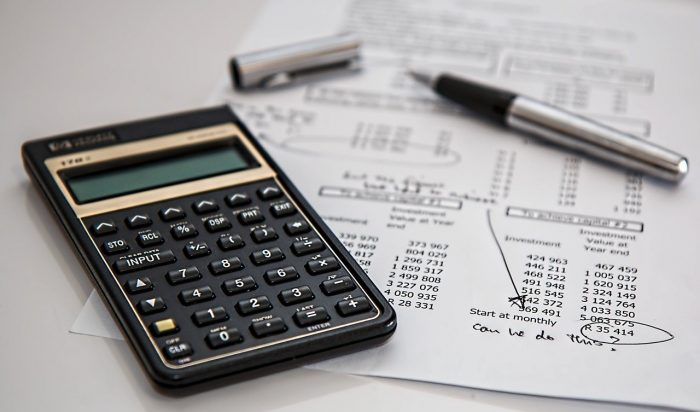What Is a Good Return on Commercial Property?
Published
February 18, 2020
Published
February 18, 2020

Updated: 26 August 2025
Commercial property investment continues to attract investors who want reliable income and the potential for long-term growth. In a market shaped by inflation, shifting interest rates, and changing business needs, commercial real estate still stands out for its ability to deliver steady cash flow. But what counts as a good return on a commercial property in today’s environment?
Many investors will have different criteria for what a good return is on a commercial property:
- Yields must be higher than residential property investment
- Returns must be greater than the cost to finance the property
- The property provides an income to live off
- The return outweighs the risk of investing
Everyone is different. But the first thought in most investors heads when assessing a commercial property investment opportunity is yield.
Understanding Yield in Commercial Property
What is yield?
Yield is the annual cash flow amount expected from an investment. It’s expressed in percentage form and is a huge driver for many investing in commercial property.
The term gross yield is used to describe the rate of return a property generates. It’s calculated as the rental amount paid by the tenant divided by the property value.
Net yield is the same calculation. But takes the rental amount after expenses and outgoings are applied (such as mortgage repayments and land tax).
Gross vs Net Yield
Gross yield is the rental amount divided by the property value. Simple as that. Net yield accounts for expenses and outgoings (like mortgage repayments, land tax, and management costs), giving a clearer picture of true returns.
What is a good rental yield on a commercial property?
Yields from commercial property generally sit higher than residential property, often ranging between 5 % to around 10% depending on market conditions, location and tenant quality. By contrast, residential property typically returns a much lower yield, usually around 2% to 4%.
The main reason for the difference is found in the lease agreement.
Residential tenancies run for one or two years and rental payments are usually less than the amount owed to the bank. Meanwhile, commercial properties are occupied by businesses making money from the premises.
Lease agreements for commercial properties often run for several years—sometimes up to a decade or more—and provide stability through consistent rental payments. These leases are also commonly structured with rent reviews tied to inflation or market conditions, which helps investors preserve income value over time.

Yields from commercial property can be anywhere from 5% to 10%. Meanwhile, residential property is known for yields between about 1% and 3%.
One tool to understand a good commercial property income is the capitalisation rate. The cap rate uses the net operating income of the property divided by its current market value to find the potential rate of return. Investors can use this formula to compare their property’s likely return to similar properties in the area.
What is a good capital gain on a commercial property?
On the sale of a commercial property, investors can be all smiles when calculating the difference in the amount they sold and paid for their property. This difference is called a capital gain (or capital loss, if the sale price is less than the amount purchased).
Many investors forget that commercial property can provide large capital gains. Well-managed commercial properties have historically delivered strong total returns, with capital growth adding significantly to income yields. While results vary between markets and cycles, investors can often benefit from both stable rental income and meaningful capital appreciation over the long term.
To maximise the profit from the sale of your property, it’s important to understand Capital Gains Tax (CGT). Tax rules can change, and working with a qualified adviser ensures you’re making the most of available concessions and structuring your investment wisely.

To make sure the most profit from the sale of your property goes into your pocket (and not the taxman’s), investors should understand Capital Gains Tax (CGT).
To understand whether your commercial property investment will provide a solid capital gain at the end of the day, it’s important to know how much CGT (Capital Gains Tax) you’ll pay on a commercial property investment.
The Role of Capitalisation Rates
A key tool for assessing income potential is the capitalisation rate (cap rate). It’s calculated by dividing a property’s net operating income (rental income minus outgoings) by its current market value. Expressed as a percentage, the cap rate makes it easy to compare the relative return of different properties. A higher cap rate often suggests greater potential returns but may also carry higher risk, while lower cap rates typically reflect stronger tenant covenants or premium locations.
Cap rates also shift with broader market conditions. Rising interest rates usually push cap rates higher, reducing property values, while low-rate environments often compress cap rates and boost prices. This makes the metric not just a measure of property-level return, but also a reflection of investor sentiment and economic trends. Still, it’s important to remember that cap rates don’t account for future growth potential, rent reviews, or redevelopment opportunities — they’re best used alongside a wider analysis of tenant strength, lease terms, and market fundamentals.
Run the numbers yourself with our free Capitalisation Rate Calculator to see how your property stacks up.
Define Your Investment Goals (Before Worrying About Return)
Ultimately, what makes a “good” return on commercial property depends on your personal goals. Are you seeking reliable passive income to supplement retirement? Do you want to build long-term wealth through capital growth? Or are you focused on balancing higher returns with a level of risk you’re comfortable with? The right strategy looks different for every investor.
No matter where you are in your commercial property investment journey, it’s handy to turn the complexities into simplicities. For more information on the returns you can expect from investing with a commercial property investment business, get in touch with us today.






